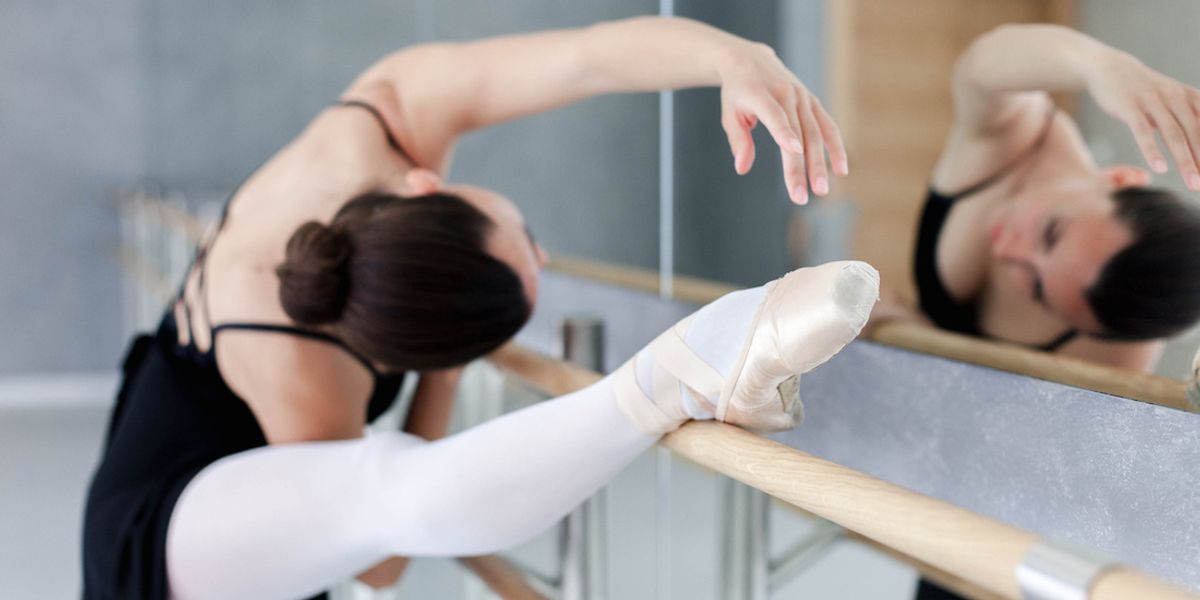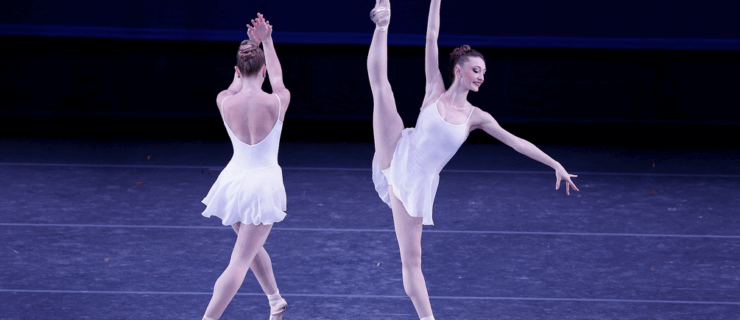A Bit (Too Much) of a Stretch: The Risks of Overstretching
If you’ve seen it once, you’ve seen it a million times: a pic or vid of an über-flexible dancer stretching her enviably limber limbs. She’s got her banana feet jammed between a portable barre and the floor, or a Gumby-esque leg propped impossibly high on a dresser. You’ve probably felt jealous of her wow-worthy flexibility.
But Ashley deLalla, a physical therapist and Pilates instructor with the Children’s Hospital of the King’s Daughters’ Dance Medicine Program in Norfolk, VA, has a very different reaction. “It’s cringeworthy. I find myself holding my breath, especially when you look at how young these dancers are,” she says. Athletic trainer and acupuncturist Megan Richardson, who’s on staff at the Harkness Center for Dance Injuries in NYC, agrees: “Overstretching—forcing yourself into an extreme position for a long time, or doing the wrong stretch for what you’re trying to achieve—has always been a cultural problem in the dance world.” So what is the right way to stretch? We’re so glad you asked.
The How and the When
If you flop down into a straddle as soon as you walk into the studio before technique class, you’re doing it wrong. “You never want to statically stretch a cold muscle,” deLalla says. “You always want some kind of warm-up to get oxygen to those muscles, whether that’s a ballet warm-up at the barre, walking laps, or riding your bike to the studio.”
Before class, stick to foam rolling or dynamic stretches (which Richardson defines as stretches that move through the muscle’s full range of motion without holding, with a pause of at most 1 count). “Go as far into the stretch as you need to feel it, then contract the muscle by returning to your starting position,” she says. “Like an accordion, this gently pumps and warms the muscles, priming them to dance.” Static stretches, like sitting in your splits, should really only be performed after class or at the end of your day at the studio, once your muscles are good and warm.

For a stretch like this, make sure to warm up properly first to prevent the risk of injury. (Getty Images)
The Why Not
Strange but true: The main problem with overstretching is that your muscle fibers aren’t the only things getting longer. That’s because forcing your muscles into an extreme stretch also forces ligaments and joint capsules to lengthen, and these connective tissues don’t benefit from being stretched. “Stretched-out ligaments lose their ability to contract back to their original length,” Richardson explains. “And joint capsules are like little balloons that hold our joints in place. Once that balloon or ligament is stretched out, your muscles have to work harder to create stability—which isn’t their job.”
If your muscles are busy stabilizing your joints, they can’t produce as much force (think lower jumps, slower response times, and more muscle fatigue). Not to mention that joint instability from incorrect stretching can lead to injuries, including hip impingement, evulsion fractures, and labral tears—yikes.
Done right, stretching is an important component of improved technique and injury prevention. But you have to pay attention to where you’re feeling the stretch (ideally in the very middle of the targeted muscle, or the “muscle belly”), and resist the temptation to go to extremes. “Your dance teachers, local pediatric orthopedic clinic, physical therapists, athletic trainers, or even your pediatrician can help you understand the basic anatomy behind proper stretching,” deLalla says. “The more you practice, the more you’ll understand what a stretch should feel like, versus something not feeling right.”




